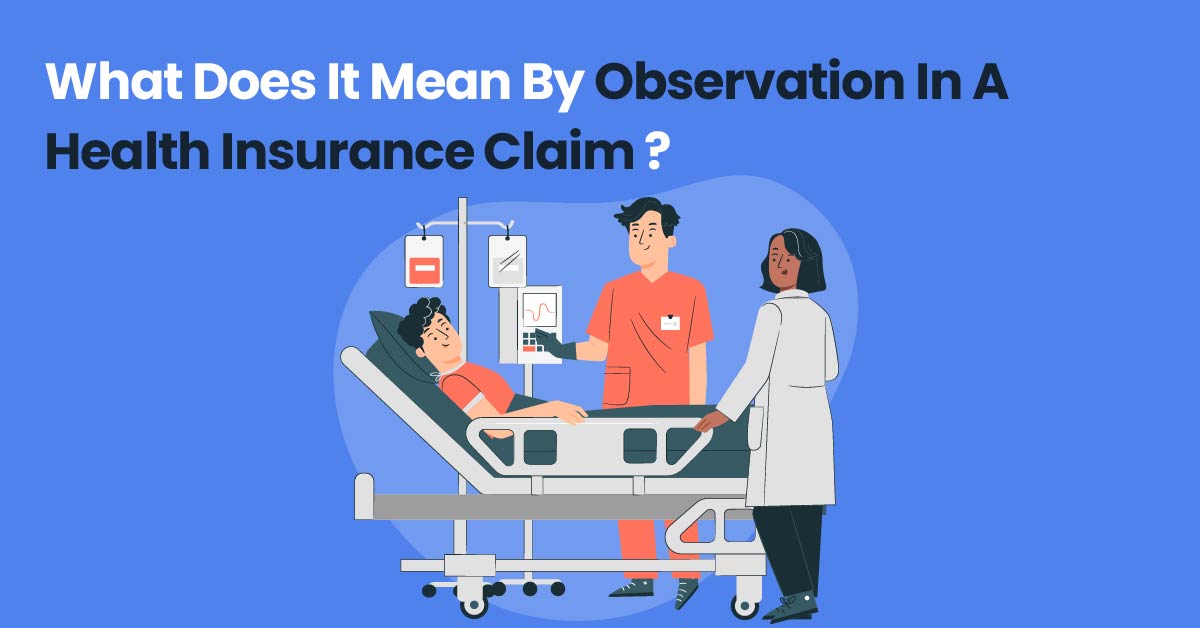
When it comes to health insurance, hospitalisation is a crucial aspect that policyholders need to consider. However, not all hospitalizations are covered under insurance policies, particularly those solely for investigations or evaluations. In such cases, healthcare providers may opt for observation, which involves admitting the patient to the hospital to monitor their condition and determine if hospitalisation is necessary. In this blog post, we’ll dive deeper into observation in health insurance claims, its importance, and how it affects policyholders.
What is Observation in Health Insurance Claims?
Observation is a practice in health insurance claims where patients are admitted to the hospital to monitor their symptoms and determine if hospitalisation is necessary. It is usually recommended for patients who display symptoms that may require hospitalisation, but healthcare providers are unsure if hospitalisation is necessary. During observation, the patient is usually given medical tests and treated with medication, but no definitive diagnosis is made.
The Importance of Observation in Health Insurance Claims
Observation is essential in health insurance claims as it helps healthcare providers determine if hospitalisation is necessary, which can help save costs for both the patient and insurance company. Additionally, it ensures that patients receive the necessary care and treatment they require, without incurring additional expenses for unnecessary hospitalisation.
According to IRDA guidelines, hospitalisation solely for investigations or evaluations is not covered under insurance.
How Observation Affects Policyholders?
When it comes to health insurance claims, observation can significantly affect policyholders, particularly in terms of coverage. In both cashless and reimbursement claims, a minimum of 24 hours of hospitalisation with an active line of treatment is required. If there is no active line of treatment provided during the hospitalisation, the claim may be rejected, as hospitalisation only for observation is not covered.
Additionally, if a policyholderA policyholder is an individual or entity that owns an insurance policy and pays the premium in exchange for coverage. More does not have OPD (Outpatient Department) coverage under their policyAn insurance policy is a legally binding contract between an insurance company (insurer) and an individual or business (policyholder). It More, they may have to pay for expenses out of their pocket. However, if they have OPD coverage, they can claim expenses paid at the time of discharge by submitting the necessary documents.
How is a patient’s inpatient or observation status assigned?
The patient’s inpatient or observation status is assigned at the time of discharge based on the treatment provided by the treating doctor. If the doctor determines that hospitalisation was necessary and provides an active line of treatment, the patient is considered an inpatient. However, if no active line of treatment is provided, the patient is considered an outpatient, even if they were hospitalised for more than 24 hours.
Conclusion
Observation plays a critical role in health insurance claims, particularly in determining if hospitalisation is necessary and complying with IRDA guidelines for group health insurance. Policyholders need to be aware of the importance of observation, its impact on their coverage, and how their inpatient or observation status is assigned. By understanding these aspects, policyholders can ensure that they receive the right coverage and treatment they require, while avoiding unnecessary costs.
